Key Takeaways:
- Pee pads can be a viable alternative for cats, especially for those with mobility issues or during training.
- Proper introduction and placement of pee pads are crucial for successful adoption by cats.
- Maintaining hygiene and monitoring for any health issues are essential when using pee pads for cats.
Cats are known for their cleanliness and particular bathroom habits, which often involve a litter box filled with their preferred type of litter. However, cat owners may wonder, "Can cats use pee pads instead of the litter box?" The answer is yes, under certain circumstances, pee pads can serve as an alternative to traditional litter boxes. This article will explore the situations where pee pads might be suitable, how to introduce them to your cat, and the pros and cons of making the switch.
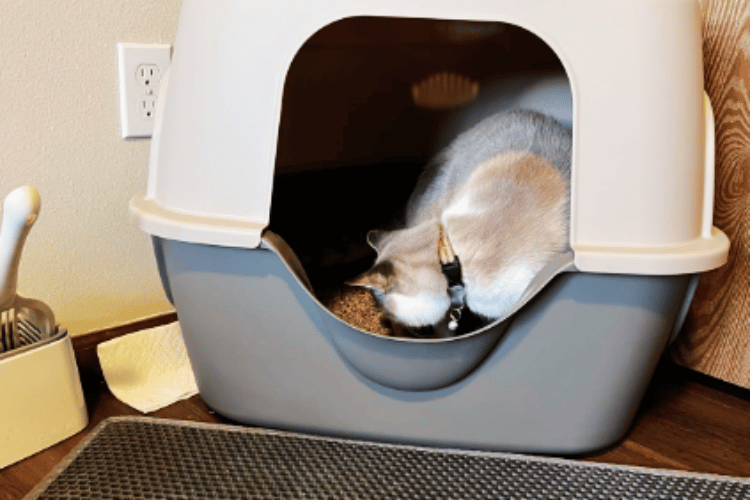
Understanding the Basics of Pee Pads for Cats
Pee pads, also known as puppy pads or training pads, are absorbent, disposable pads designed to catch pet waste. While they are commonly associated with puppy training, they can also be used for cats. A cat pee pad is typically made of multiple layers that lock in moisture and control odor, making them a convenient option for cat owners.
When to Consider Pee Pads for Your Cat
There are several scenarios where cat owners might consider using pee pads. For example, if you have an older cat with arthritis or mobility issues, a flat pee pad may be easier to access than a high-sided litter box. Additionally, if you're training a kitten or have an outdoor cat transitioning to indoor life, pee pads can be a helpful intermediate step.
Introducing Pee Pads to Your Cat
Transitioning from a litter box to pee pads requires patience. Start by placing a pee pad next to the existing litter box. Encourage your cat to explore the pad by gently placing them on it and offering treats as a reward. Over time, you can gradually move the litter box away, leaving the pee pad as the primary option.
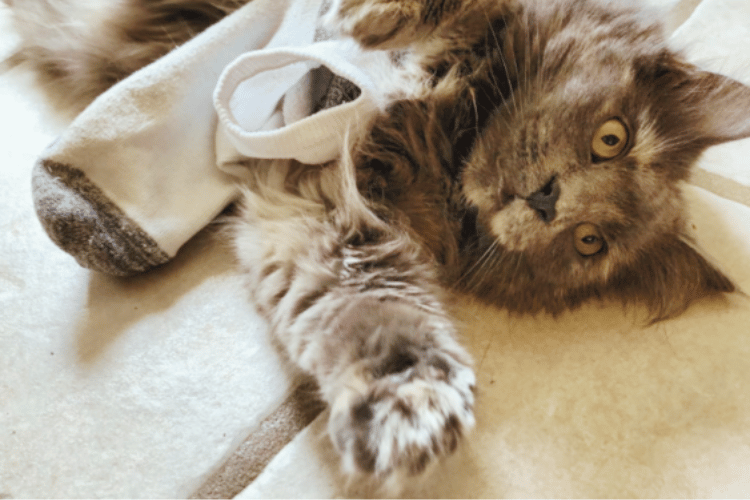
The Pros of Using Pee Pads
Pee pads can be particularly handy for cat owners living in apartments without easy access to an outdoor area. They're also useful during travel or in multi-pet households where one litter box might not suffice. Moreover, pee pads are beneficial for cats that tend to make a mess with traditional litter. The Behavioral Side of Litter Preferences Cats are creatures of habit, and their litter preferences can speak volumes about their comfort and behavioral health. When your cat suddenly abandons the litter box for a puppy pee pad, it might be signaling a change in its environment that's causing stress or discomfort. Cats tend to be private when it comes to their bathroom habits, and a pee pad in a quiet, secluded spot can sometimes be more appealing than an empty litter box in a busy area. Observing your cat's behavior around its litterbox can provide insights into its preferences and help you make the best choice for its needs.
On the flip side, if your cat has started spraying around the house, it could be a sign of a territorial issue, especially if there are other cats or dogs in the home. Male cats, in particular, may spray to mark their territory, and this behavior can be exacerbated by the presence of an uncovered litter tray that doesn't offer them the privacy they crave. By understanding these behavioral cues, you can better address your cat's needs, whether that means providing a clean one with a cover or transitioning to pee pads in their favorite spot.
Health and Hygiene Considerations When it comes to your cat's health, the type of litter solution you choose can play a significant role. Pee pads can be a sanitary option, especially for cats with a health condition that causes frequent urination or accidents. These pads are typically made of absorbent materials that lock in moisture and control odor, which can keep your house smelling fresh and reduce the spread of bacteria. Changing pee pads twice a day ensures that your kitty's area remains clean, which is crucial for cats with sensitive health conditions.
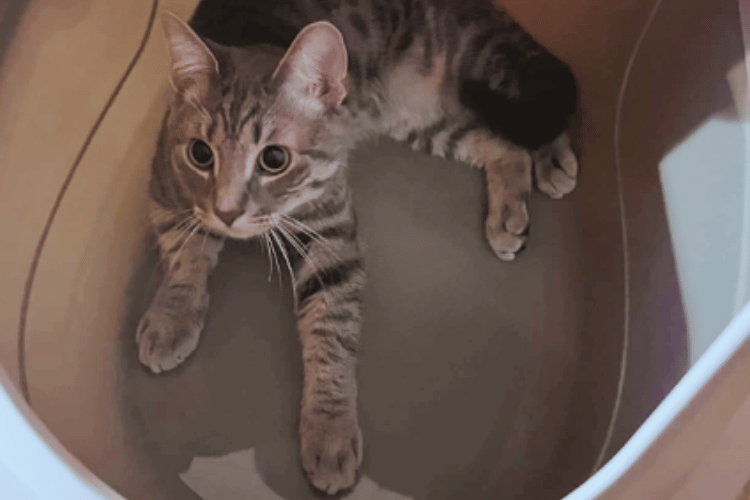
However, it's important to remember that a sudden change in bathroom habits can also indicate a medical problem. If your cat's litter box remains empty while it opts for the carpet or floor instead, it's time to consult a veterinarian. Health issues such as urinary tract infections or kidney problems can lead to peeing outside the litter box, and early detection is key to managing these conditions. Always keep an eye on your cat's bathroom behavior and maintain a clean and inviting space, whether it's a traditional cat box or a pee pad, to promote good health and hygiene.
Environmental Impact of Pee Pads
Pee pads, often associated with puppy training, are becoming a popular option for cat owners too. But have you ever wondered about their environmental footprint? Traditional pee pads are typically made of plastic and other materials that aren't biodegradable. When your cat uses a pee pad, it's not just about convenience; it's about considering the long-term effects on our planet. Each pad might only be used for a day or a week, but they accumulate in landfills, contributing to the growing problem of plastic waste.
Thankfully, eco-conscious pet owners have options. Biodegradable pee pads are now available, offering a more sustainable choice. These pads break down much faster than their plastic counterparts, reducing your cat's environmental paw print. When your cat likes to keep things clean and green, these pads can be a great alternative. They're perfect for the cat owner at their wits' end, trying to balance convenience with environmental responsibility. Plus, they help keep the room smelling fresher, as they often contain natural odor-controlling properties.
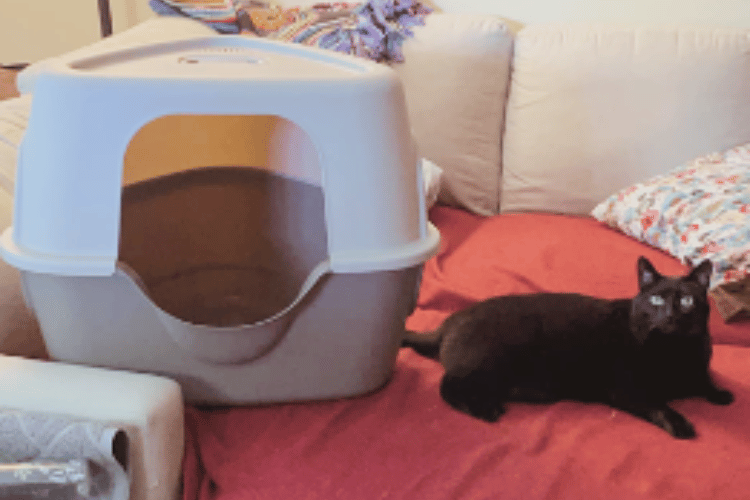
Pee Pad Materials and Cat Safety
When considering pee pads for your cat, it's essential to think about the materials they are made from. Many puppy pee pads are designed with absorbent layers to lock in moisture and control odor, which can be just as effective for your cat's urine. However, you'll want to ensure that the materials are non-toxic and safe for your cat, especially since cats can be quite sensitive to new products. Some pee pads are even infused with attractants that can help guide your cat to use them, but it's crucial to confirm that these substances are cat-friendly.
Moreover, the top layer of the pee pad should be durable enough to withstand your cat's claws. Unlike dogs, cats may scratch and fold the pads, potentially creating a mess. Look for pee pads that are tear-resistant to prevent your cat from shredding them during use. This is particularly important if your son's cat has a habit of digging and covering their waste, as a flimsy pad won't stand up to such behavior and could lead to leaks and spills. The Role of Scent Marking in Pee Pad Training Cats are territorial creatures, and scent marking plays a crucial role in their behavior. When introducing pee pads to your cat, it's essential to understand that your feline friend uses scent to establish comfort and familiarity. By placing a used pad from your dog or another cat in the household, you can encourage your cat to recognize the pee pad as an acceptable place to do their business. This can be particularly helpful if you're at your wits' end trying to transition your cat from a litter box to a pee pad.
Moreover, for multi-pet households, it's important to note that your cat may be influenced by the presence of a dog's scent. If your cat's pee pad is too close to where your dog might roam or rest, your cat may feel intimidated or reluctant to use the pad. To avoid this, ensure that your cat's pee pad is placed in a quiet, secure area where they can do their business without feeling threatened or stressed by the dog's scent.
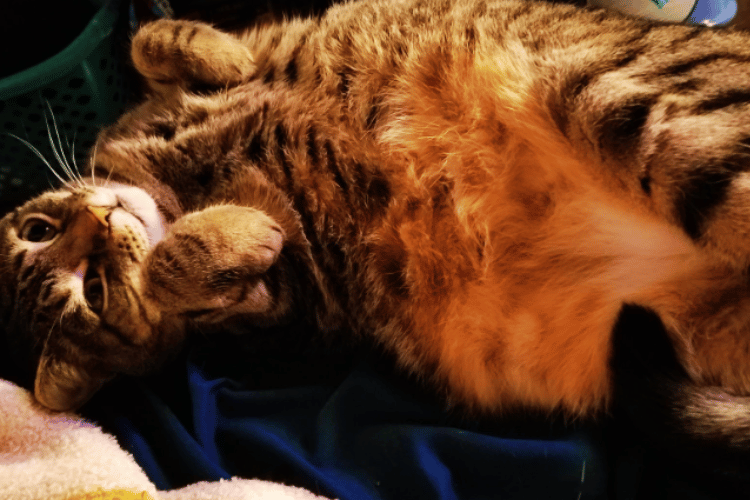
Addressing the Challenges of Pee Pad Training for Senior Cats As cats age, they may face mobility issues that make it difficult to access the litter box. For a senior cat, the use of pee pads can be a gentle alternative, reducing the strain of climbing into a covered litter box. When introducing pee pads to an older cat, patience is key. Start by placing the pee pad near the litter box, gradually moving it to a more convenient location as your cat becomes accustomed to the new setup.
However, it's not uncommon for senior cats to be set in their ways, and some may resist the change. If you find yourself at your wits' end, try using pee pads with attractants or placing a small amount of your cat's poop on the pad to encourage use. Remember, the goal is to make the transition as stress-free as possible for your senior companion, ensuring their comfort and hygiene remain a top priority.
Creative Uses for Pee Pads Beyond the Litter Box
Pee pads can be a versatile tool for cat owners beyond just serving as an alternative to the traditional litter box. For instance, if you're at your wits' end with your cat's occasional accidents during the night, placing a pee pad under their sleeping area can provide an extra layer of protection for your floors and bedding. This can be especially helpful for older cats who may have trouble making it to the litter box in time.
Additionally, pee pads can be useful during travel. If you're taking a long car ride with your cat, a pee pad can serve as a temporary restroom. Simply fold one out in the carrier or in a secluded area of the vehicle. This can help reduce stress for both you and your cat by providing a familiar and safe spot for them to relieve themselves. It's a simple solution that can make a significant difference in travel comfort for your feline friend.
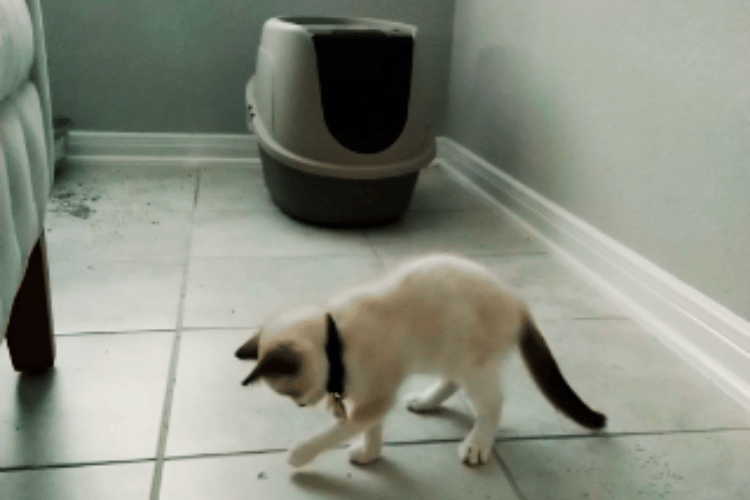
Behavioral Insights: Why Some Cats Prefer Pee Pads
Cats are creatures of habit, but they're also individualistic with their preferences. Some cats prefer pee pads over traditional litters for various reasons. For instance, a male cat might find the soft surface of a pee pad more comfortable, especially if he's recovering from surgery or has sensitive paws. Pee pads can also be a boon for older cats who find it challenging to step into a high-sided litter box. The ease of walking onto a flat pad can make all the difference for their comfort and willingness to use the toilet area.
Another reason your cat might hang around pee pads could be the location. Cats love their privacy, and if the pee pad is placed in a quiet, secluded room, they might opt for it over a more exposed litter box. Additionally, some cats dislike the smell of certain litters, and unscented pee pads can be a welcome alternative. If you're at your wits' end trying to figure out why your cat won't use the litter box, consider the pee pad's placement, texture, and smell. Observing your cat's behavior can provide valuable insights into their litter preferences, helping you create a more harmonious bathroom routine for your feline friend.
The Cons of Using Pee Pads
Despite their benefits, pee pads have drawbacks. Some cats may never take to them, preferring the texture and dig-ability of litter. Additionally, pee pads can be less cost-effective over time and may lead to more environmental waste compared to some types of litter.
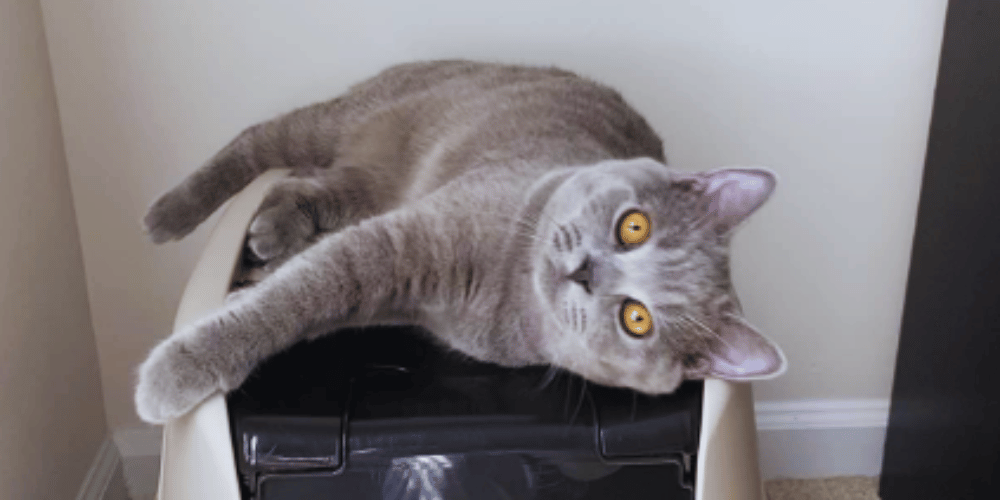
Placement and Maintenance of Pee Pads
Proper placement is crucial for encouraging your cat to use pee pads. Choose a quiet, private area away from their food and water. It's also important to change the pads regularly to maintain hygiene and prevent odors.
Health Considerations When Using Pee Pads
Monitoring your cat's bathroom habits is essential, as changes can indicate health issues such as urinary tract infections or kidney disease. If your cat suddenly stops using the litter box or pee pads, consult a vet to rule out any medical problems.
Alternatives to Pee Pads
If pee pads don't work for your cat, consider other litter box alternatives like pellet litter or crystal litter. These can offer different textures and odor control, which some cats may prefer.
Training Tips for Pee Pad Use
Training cats to use pee pads can be similar to litter box training. Place your cat on the pad after meals and naps, and reward them for using it. Consistency and positive reinforcement are key to successful training.
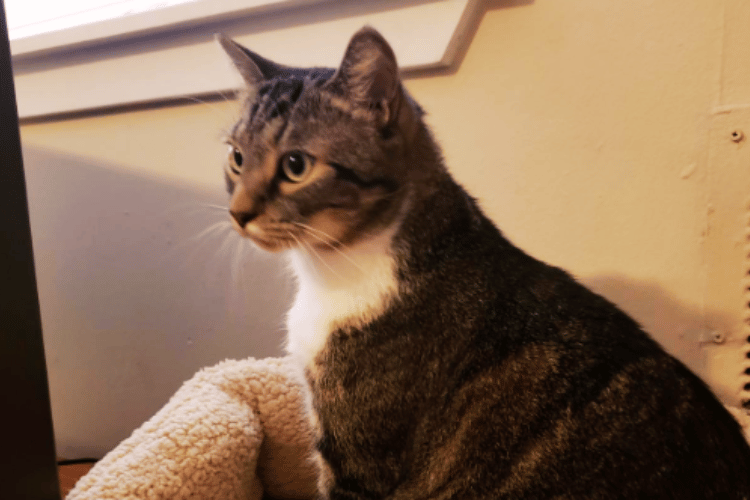
Summary
Pee pads can be a suitable alternative to litter boxes for some cats, particularly those with special needs or in specific living situations. Introducing pee pads to your cat requires patience and positive reinforcement. While there are advantages to using pee pads, such as convenience and cleanliness, there are also downsides, including potential cost and environmental impact. It's important to maintain hygiene and monitor your cat's health when using pee pads. If pee pads are not a good fit, there are other litter alternatives to explore.
FAQ Section
Q: Can all cats be trained to use pee pads? A: Most cats can be trained to use pee pads, but some may resist due to personal preference or dislike of the pad's texture. It's important to be patient and consistent with training.
Q: How often should I change my cat's pee pad? A: Pee pads should be changed at least once a day, or more frequently if you have more than one cat or if the pad becomes heavily soiled.
Q: Are pee pads a good long-term solution for cats? A: Pee pads can be a long-term solution for cats, especially for those with mobility issues or in situations where a traditional litter box is not feasible. However, it's important to consider the ongoing cost and environmental impact.
Thank you for visiting LegitLists we hope this helps you make a legitimate choice!






